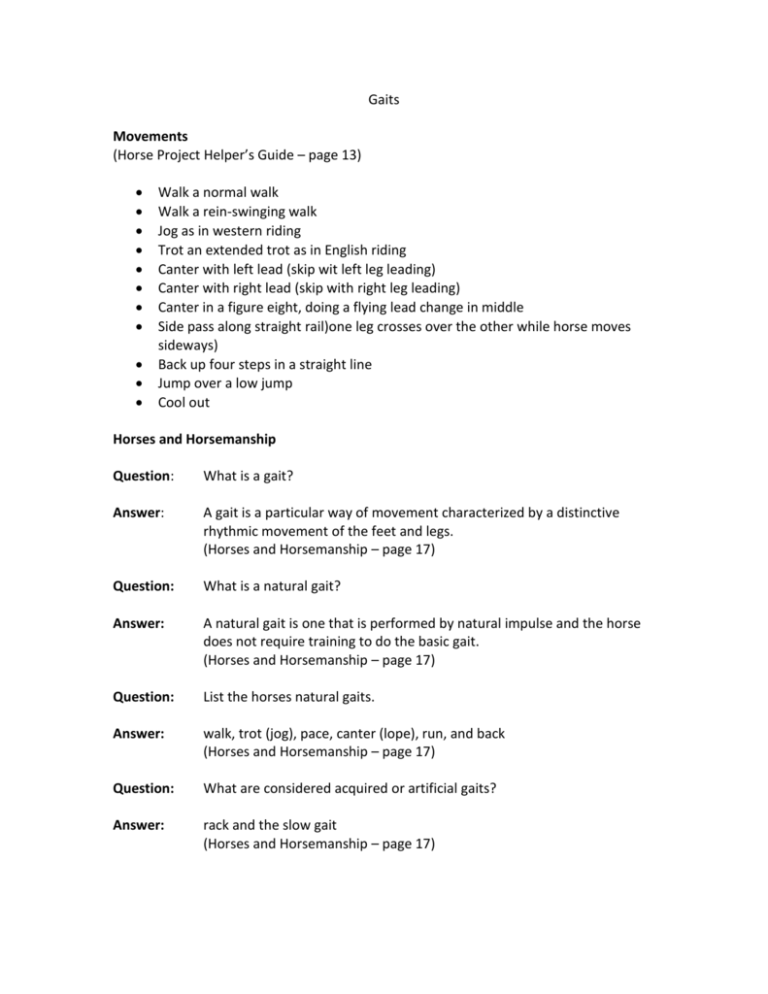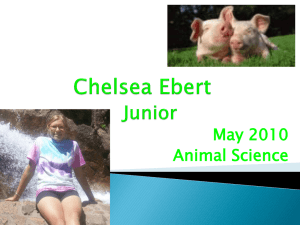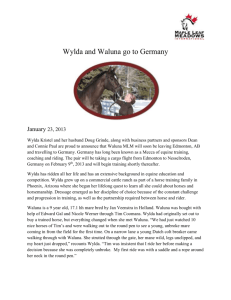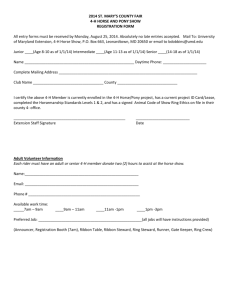Gaits - ozeduteam
advertisement

Gaits Movements (Horse Project Helper’s Guide – page 13) Walk a normal walk Walk a rein-swinging walk Jog as in western riding Trot an extended trot as in English riding Canter with left lead (skip wit left leg leading) Canter with right lead (skip with right leg leading) Canter in a figure eight, doing a flying lead change in middle Side pass along straight rail)one leg crosses over the other while horse moves sideways) Back up four steps in a straight line Jump over a low jump Cool out Horses and Horsemanship Question: What is a gait? Answer: A gait is a particular way of movement characterized by a distinctive rhythmic movement of the feet and legs. (Horses and Horsemanship – page 17) Question: What is a natural gait? Answer: A natural gait is one that is performed by natural impulse and the horse does not require training to do the basic gait. (Horses and Horsemanship – page 17) Question: List the horses natural gaits. Answer: walk, trot (jog), pace, canter (lope), run, and back (Horses and Horsemanship – page 17) Question: What are considered acquired or artificial gaits? Answer: rack and the slow gait (Horses and Horsemanship – page 17) Walk Question: Describe the walk. Answer: slow, natural flatfooted, four beat gait (Horses and Horsemanship – pate 17) Question: What is known as the foundation gait? Answer: the walk (because horses are asked to move to other gaits from the walk) (Horses and Horsemanship – page 17) Question: Describe the walk pattern. Answer: right fore, left rear, left fore, right rear (Horses and Horsemanship – page 17) Question: What feet are bearing weight at the walk? Answer: A horse never has more than three or less than two feet bearing weight at the same time during the walk. This gives the horse a triangular base of support. (Horses and Horsemanship – page 17) Question: Horse breeds have different types of walks, describe at least three. Answer: For the Draft Horse, the walk is the most important gait and should be a powerful stride. For the Western Horse, the walk should be straight, flat-footed and ground covering with less height and action. For the English Horse, the walk should be proud, more action and attractiveness in contrast to power. (Horses and Horsemanship – page 17) Question: What are the five different walks asked for in a Dressage Test? Answer: working walk, collected walk, medium walk, extended walk, and free walk (Horses and Horsemanship – page 17) Trot Question: Describe the trot. Answer: rapid two beat diagonal gait (Horses and Horsemanship – page 18) Question: Describe the trot pattern. Answer: The forefoot on one side and the opposite hind foot take off and strike the ground at the same time. The horse works from one pair of diagonals to the other pair. The weight of the horse is distributed by one diagonal and then the opposite diagonal. Then, all four feet are off the ground at the same time for a very brief moment. (Horses and Horsemanship – page 18) Question: What should the trot look like? Answer: The trot should be square, balanced and springy with a straight and forward movement of the feet. (Horses and Horsemanship – page 18) Question: Horse breeds have different types of trots; describe at least two. Answer: For the Hackney Horse, the collected trot has extreme flexion of knees and hocks that produces a high stepping gait. For the Standardbred Horse, the extended trot will have length and rapidity of individual strides. (Horses and Horsemanship – page 18) Question: What are the two different trots asked for in an English Performance Class? Answer: collected and extended trots or pleasure trot and road trot (Horses and Horsemanship – page 18) Question: What type of trot will be asked for in a Western Show Class? Answer: western horses do a jog (a slow, smooth, less elevating, possibly a more ground covering gait with the rider seated (not posting) (Horses and Horsemanship – page 18) Canter Question: How many beats are in the canter? Answer: three (Horses and Horsemanship – page 18) Question: Describe the canter pattern. Answer: Pace Stride Question: What are the features of the horses stride? Answer: Balance – ability of the horse to control its action in order to travel collectedly and in correct form Directness – the line in which the foot is carried during the stride Height – the amount of foot elevation in the stride, determined by the radius of the arc Length – the distance from the point of breaking over in preparation for flight in a stride to the point of surface contact of the same foot Rapidity – the time used in taking one stride Regularity - the precision sequence with which each stride is taken in turn (Horses and Horsemanship – page 19)







